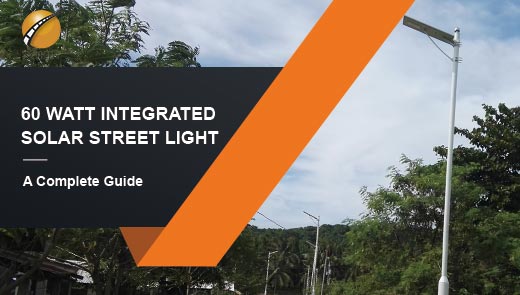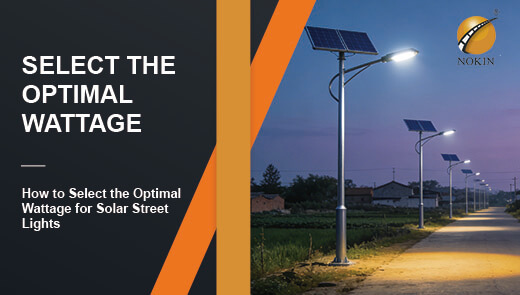Village Solar Street Lights Watts Choose Guide
In the process of rural development, the improvement of lighting infrastructure is crucial. With its unique advantages, village solar street lights have become the first choice for many rural lighting upgrades. Choosing the right wattage of LED light head is the key to ensure that solar street lights play the best performance. In this article, we will discuss the issues related to the wattage of LED lamps required for village solar street lights, and provide professional guidance for the planning and installation of rural solar street lights.
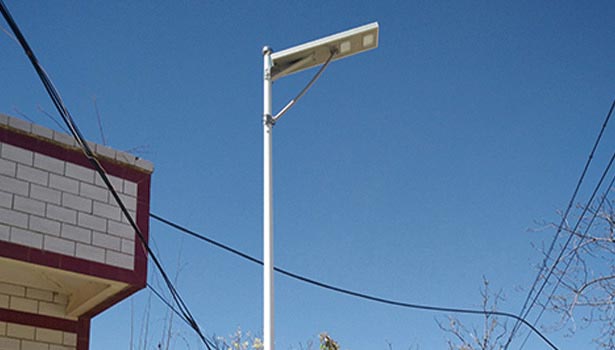
Advantages of Installing Village Solar Street Lights
Environmental Benefits
As an inexhaustible renewable energy source, solar energy provides a clean power source for solar street lights. Unlike traditional fossil fuel-powered streetlights, solar LED street lights achieve zero emissions during operation, greatly reducing pollution to the environment.
In addition, the LED lamps are energy efficient and have a longer lifespan than traditional light bulbs, and the low energy consumption of LED lamps further reduces energy consumption as they consume less power at the same brightness level. At the same time, their long lifespan reduces the frequency of bulb replacements and waste generation, complementing the eco-friendly nature of solar energy and creating a green, sustainable lighting environment in the countryside.
Economic Benefits
Although the initial purchase and installation costs of solar powered LED street lights are relatively high, the economic advantages are obvious in the long run. Since solar streetlights rely on solar power, there is no need to pay for electricity, which can result in significant annual savings on electricity expenses.
In addition, the maintenance cost of solar street lights is extremely low. The quality of the components used is reliable, with good stability and durability, reducing the frequency of repair and replacement. This long-term cost savings makes solar street lights an affordable solution for rural lighting. Moreover, the continuous illumination provided by the streetlights also promotes nighttime commercial activities in the countryside and drives local economic development.
Social Benefits
The installation of village solar street lights has significantly improved safety in the countryside at night. In the past, without good lighting, there are many safety hazards on rural roads, traffic accidents, falls and injuries occur from time to time. Solar LED street lights, so that villagers traveling at night more safe and secure, whether walking or riding, can clearly see the road conditions.
At the same time, the bright village solar LED street lights also illuminate the public areas of the countryside, creating conditions for villagers to socialize at night. People can walk and chat under the streetlights, the cohesion of the community is enhanced, and the quality of life of the villagers is also improved.
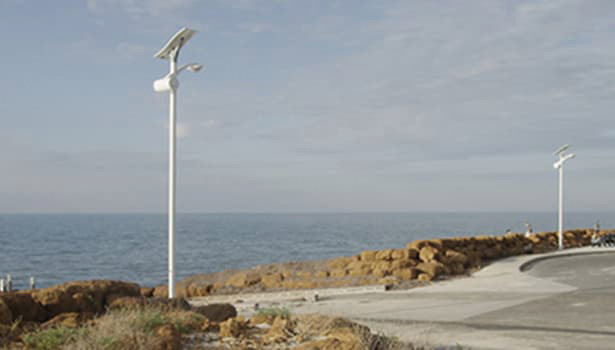
Key Factors Affecting the Choice of Village Solar LED Street Light Wattage
The Relationship Between Wattage and Brightness and Other Influencing Factors
Usually, the higher the wattage of village solar LED street light, the brighter the light emitted. However, the actual lighting effect does not depend on the wattage alone. The height of the pole, the width of the road, the spacing of the poles, the length of the cantilever, the angle of the cantilever, and the distance from the pole to the road all have a significant impact on the illuminance (to maintain the average illuminance) and luminance (to maintain the average luminance) of the ground.
For example, in narrower country lanes, lower wattage streetlights may be able to meet the lighting needs; while on wide trunk roads, higher wattage street lights are needed to ensure adequate lighting. Therefore, when choosing the wattage of LED street light, it is necessary to consider these factors comprehensively and carry out scientific and reasonable planning.
Different Scenes on the Street Lamp Wattage Demand Differences
Different scenes have different lighting requirements. In rural residential areas, lighting is mainly to facilitate residents to go home at night and activities in the district, the brightness requirements are relatively low, usually choose a lower wattage street light can be.
The main road as an important channel of rural traffic, vehicles and pedestrians frequent, need a higher brightness and a wider range of lighting to ensure traffic safety, so the need for higher wattage street lamps. Town centers and other densely populated areas with more commercial activities also require bright lighting to create a good ambience, and are also suitable for high wattage street lights.
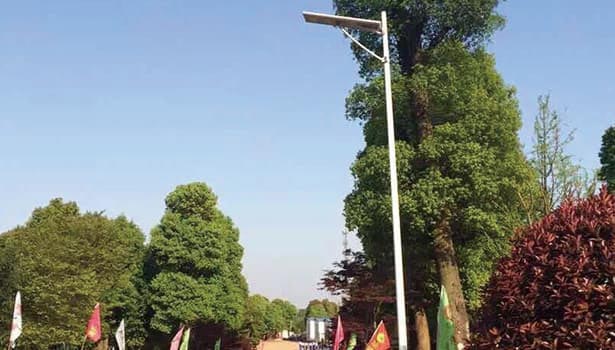
Quick Way to Choose the Right Solar Street Light Wattage
Refer to the Wattage of Existing Streetlights
If there is an existing street light installed on a rural road, and it is an old type of street light such as high-pressure sodium lamp or metal halide lamp, you can refer to its wattage to choose LED street light. Generally speaking, to replace a 250W high pressure sodium lamp, a 100W LED street lamp will be able to meet the lighting needs. It is usually recommended that the wattage of LED streetlights can be set at 25% - 40% of the wattage of the existing high-pressure sodium lamps. This method is simple and practical, and can ensure the lighting effect while realizing energy-saving upgrade.
Selection Based on Pole Height
The height of the pole is an important reference index for choosing the wattage of LED street lights. The following is a rough correspondence:
|
Pole Height |
Applicable Wattage Range |
Corresponding Road Situation |
|
2.5m – 3m |
10W |
Narrow path, small garden lighting |
|
3m – 4.5m |
15W – 20W |
Rural alleys, short neighborhood road lighting |
|
5m – 6m |
20W – 30W |
5m height for 6–8m wide roads (single lane country roads); 6m height for 8–10m wide dual carriageway roads |
|
6m – 7m |
30W – 50W |
7–8m wide dual carriageway roads |
|
7m – 8m |
50W – 80W |
Suitable for 8–10m wide 2–3 lane roads |
|
8m – 10m |
80W – 100W |
Wider roads, higher traffic areas |
|
10m – 12m and above |
120W, 150W, 200W and above |
Large plazas, main road intersections, and other places needing large area lighting |
It should be noted that these are only reference data, the actual selection should be adjusted according to the final lighting design.
Determined According to the Lighting Design
The most scientific and accurate method is to determine the wattage of LED street light according to the professional lighting design. Before the lighting design, you need to know in detail the height of the light pole, the width of the road, the spacing of the light pole, the length of the cantilever, the angle of the cantilever, as well as the distance from the light pole to the road and other information. The more detailed the information provided, the more the designed program can meet the actual needs.
It is also necessary to specify the lighting requirements of the road, i.e. the lighting classification. In some projects, the lighting classification will be specified in the tender documents. If there are no relevant regulations, you can also refer to the EU standards, according to the road speed, traffic flow, vehicle composition, ambient brightness, weather and other different conditions to determine the appropriate lighting level, and then select the LED street lamp wattage to match.
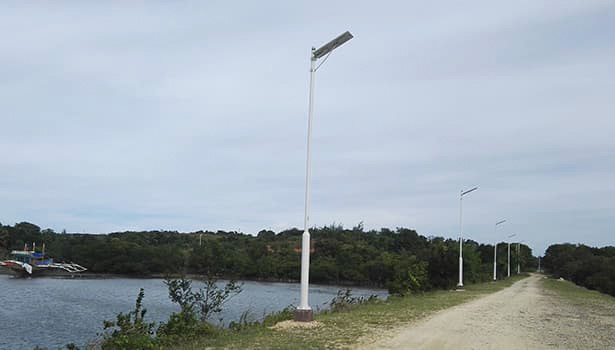
Recommended Ideal Wattage Range
15 - 30 Watts
15 - 30 watt LED heads are suitable for small areas, country lanes and residential alleys. These areas have relatively low traffic flow and do not require high lighting brightness. Lower wattage street lights can provide a comfortable lighting environment that is neither too dim to affect traffic nor too bright to cause energy waste and light pollution.
40 - 60 Watts
40 - 60 Watt LED lamps are suitable for public roads, small commercial areas, parking lots and other places. In these areas, a certain level of brightness is needed to ensure the safe passage of pedestrians and vehicles, as well as a certain range of illumination. Street lights in this wattage range can strike a good balance between brightness and coverage to meet daily lighting needs.
70 - 100 Watts
70 - 100 watt LED heads are more suitable for large areas such as rural main roads, large parking lots, and public squares with high traffic volumes. These places have higher requirements for brightness and lighting range, and high wattage street lights can provide sufficient light to ensure that the road and surroundings can be clearly seen at night, ensuring traffic safety and the smooth running of activities.
Village Solar Street Light Installation Precautions
Avoid Obscuring the Installation Location
When installing village solar LED street lights, make sure that the installation location does not have too much shade. Leaves, buildings and other obstructions will block sunlight from reaching the solar panel, seriously affecting the solar panel's absorption and utilization of solar energy, resulting in a significant reduction in charging efficiency.
If the solar panel is mounted under power lines, tree branches, light poles and other obstructions, it will leave a shadow on the solar panel during the day. Since the battery cells of a solar panel are usually connected in multiple strings, once a deeper shadow appears on a particular string of battery cells, the string is equivalent to a broken circuit in severe cases. If that solar panel is connected in multiple parallel strings, then the entire solar panel may not be able to generate electricity properly.
Proper Installation of Solar Panels
Solar panels should not be installed in a symmetrically tilted manner. Some users may install the solar panels symmetrically for the sake of aesthetics, but this will result in one side of the solar panel not receiving the sunlight correctly. When one side of the solar panel is facing the right way, the other side will be facing the wrong way, and the solar panel facing the wrong way will not be able to receive the sunlight directly, and the charging efficiency will be greatly reduced, which will affect the normal use of the street light.
Reasonable Control of Installation Distance
The installation distance of rural solar LED street light needs to be reasonably controlled, usually 25 - 50 meters. This distance is determined according to the lighting power of the street light, pole height, road width and other factors. However, some villages only determine the number of streetlights according to the budget when installing streetlights, or increase the spacing of streetlights in order to save costs. However, it should be noted that the street light spacing is too large, which will lead to dark areas in the lighting area, affecting the overall lighting effect, and failing to meet the needs of night lighting in the countryside.
Prevent Reference Light Source Interference
It is important to avoid the presence of reference light sources next to solar panels. If there are other light sources such as streetlights near the solar panel, when night falls and the nearby streetlights are lit, the solar panel may mistakenly detect the light source and mistake it for daytime. At this time, the controller of the village solar LED street light will prevent the streetlight from lighting up based on this misjudgment, resulting in the streetlight not working properly.
Pay Attention to the Applicable Environmental Conditions
Ordinary solar street lights are suitable for environments with an altitude of less than 2000 meters and a humidity of no more than 80%. Although this limitation only affects a few areas, it is still important to pay attention to it during installation. In areas that do not meet the conditions, it may be necessary to choose a specially designed village solar LED street light to ensure its normal operation and service life.
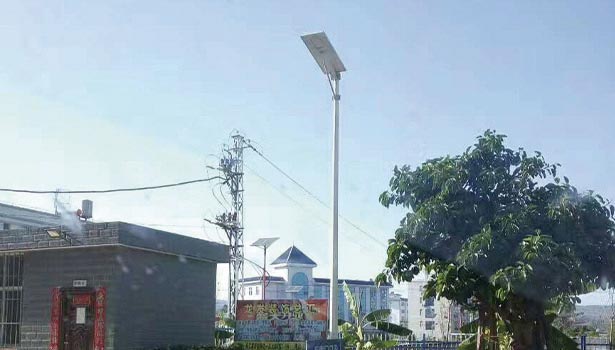
Conclusion
Choosing the right wattage of LED lamp head has a crucial impact on the lighting effect, energy utilization efficiency, and overall cost of use of rural solar street lights. By understanding the advantages of installing solar street lights in the countryside, mastering the key factors affecting the selection of LED street light wattage, applying the method of quickly selecting the appropriate wattage and following the installation precautions, rural users can scientifically and reasonably select the wattage of LED lamps and give full play to the advantages of solar street lights.
We hope that the content of this article can provide valuable reference for the planning, installation and use of village solar LED street lights in the countryside, help improve and develop the countryside lighting environment, and let the solar street lights in the countryside play a greater role in illuminating every corner of the countryside, and bring a safer, more comfortable, convenient night life for rural residents.

